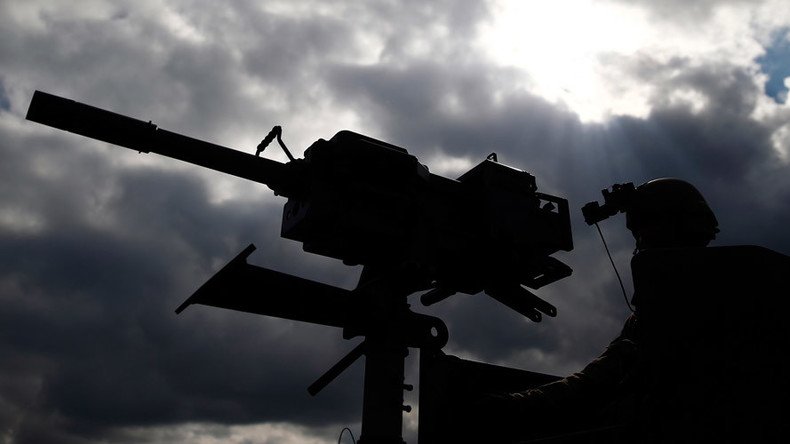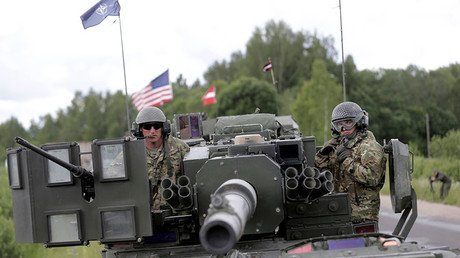11 NATO states take part in massive ‘Iron Sword’ drills in Lithuania

The Iron Sword exercises involving military forces from 11 NATO countries that started on November 20 have entered its active phase as the troops rehearse urban warfare and collective actions, TASS reports, citing the Lithuanian military.
The troops taking part in the drills are expected to carry out military tasks in multinational battalions, the Lithuanian Defense Ministry said. The exercises will take place on two military training grounds in Pabrade and Rukla.
In Pabrade, the “Baltic” training group comprised of Latvian, Lithuanian and Estonian units will stage a defense exercise and rehearse defensive warfare against the “Titan” group consisting of the British, Canadian, Polish and US units, which will simulate an attack.
In Rukla, a dragoon battalion of the Lithuanian army plan to stage mock combat against a training group comprised of the US and Romanian reservists. The exercises would involve defensive and offensive operations as well as reconnaissance missions.
The war games are meant to test Lithuania’s ability to rapidly deploy a large number of troops. They are set to last through December 2.
This year’s annual Iron Sword exercises, the largest to be held so far, involve almost 4,000 troops from the US, the UK, Germany, Canada, Poland, Romania, Slovenia, Luxemburg and the three Baltic states. The exercises in 2015 and 2014 involved 2,500 and 2,000 troops, respectively.
The NATO drills on the Russian border come amid ongoing preparations for the stationing of 4,000 alliance troops in Poland, Lithuania, Estonia and Latvia, a decision made at the NATO summit in Warsaw in July.
A quarter of the force would be composed of US troops currently based in Germany, who would relocate to Poland. A 1,000-strong German-led force equipped with tanks would be deployed in Lithuania in February. The remaining 2,000 British and Canadian troops would be stationed in Estonia and Latvia.
In the meantime, NATO has accused Russia of “aggressive military posturing” following the reports about the deployment of S-400 air defense systems and Iskander missile launchers to the Kaliningrad Region, a Russian exclave located between Poland and Lithuania.
Washington expressed its discomfort over Russia’s decision and said that Moscow has absolutely no reason to feel threatened by NATO. “NATO is a defensive alliance, it’s always been a defensive alliance, it will remain a defensive alliance,” State Department spokesman John Kirby told reporters on November 22, adding that it was “Russia’s move in Ukraine” that triggered NATO’s advancement in Eastern Europe.
In response, Moscow criticized NATO for its expansion toward Russian borders and denounced it as “a truly aggressive bloc,” adding that it has “every sovereign right to take necessary measures throughout the territory of the Russian Federation.”













